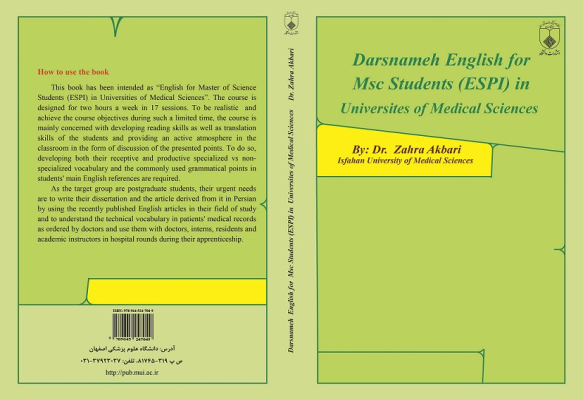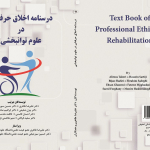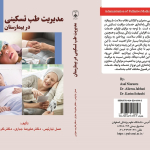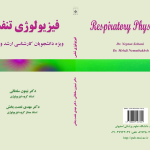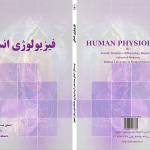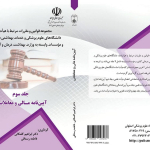Darsnameh English for MSc Students (ESPI) in Universities of Medical Sciences
نویسنده: دکتر زهرا اکبری
ناشر: انتشارات دانشگاه علوم پزشکی اصفهان با همکاری انتشارات مانی
تعداد صفحات: 236 قطع: وزیری
نوبت چاپ: اول تاریخ چاپ: 1402
How to use the book
This book has been intended as ―English for Master of Science Students (ESPI) in Universities of Medical Sciences‖. The course is designed for two hours a week in 17 sessions. To be realistic and achieve the course objectives during such a limited time, the course is mainly concerned with developing reading skills as well as translation skills of the students and providing an active atmosphere in the classroom in the form of discussion of the presented points. To do so, developing both their receptive and productive specialized vs non-specialized vocabulary and the commonly used grammatical points in students' main English references are required.
As the target group are postgraduate students, their urgent needs are to write their dissertation and the article derived from it in Persian by using the recently published English articles in their field of study and to understand the technical vocabulary in patients' medical records as ordered by doctors and use them with doctors, interns, residents and academic instructors in hospital rounds during their apprenticeship.
As far as vocabulary items are concerned, the focus is how to use the full potential of monolingual dictionaries in learning how to recognize, understand and use specialized and non-specialized vocabulary as units of meaning in different contexts. The learners are asked to check the new words' spelling, pronunciation, parts of speech, different meanings together with their examples, their derivations and collocations as used in articles related to their field of study. In this regard, how to use two online dictionaries is practiced: https://www.thefreedictionary.com/ and https://www.ldoceonline.com/. The students are asked to install them on their mobiles to have some more practice in class.
With regards to reading, reading skills such as skimming, scanning, understanding the organization of a paragraph (including its topic and supporting sentences), the word structure of medical terminology, word references, contextual clues, the function of punctuation marks, the structure of long complex sentences, making WH comprehension questions for the paragraphs in these articles to facilitate their comprehension of complex sentences collocations and chunks of meaning are practiced.
As with translation skills, units of meaning and how to make connections between them are taught to the learners. It is emphasized to convey the writer's intended meaning rather than translating every single word. They are taught how to use the optimum potential of their native language to translate the sentences in a way it matches the Persian system and sound meaningful and grammatical in their native language in the best possible way without distorting the writer's intended message. They are taught how to change the order of units of meaning in English to have more natural meaningful translations in Persian. It is also noted that while translating, they can add words to their Persian translation according to the requirements of the Persian system or omit some (repetitive) English words as far as the writer's intended meaning is not disrupted. Learners are required to use both bilingual and monolingual dictionaries to learn how to translate effectively and avoid their mother tongue interference. They are also taught how to use the previous knowledge acquired in their specialized courses appropriately in order not to impose it anyway on the translating text and prevent misinterpretation. Their main problem is word-for word translation. Therefore, helping them recognize units of meaning in complex sentences and how to join them allows learners to have significant improvement in their reading and translation activities.
The punctuation marks used in the articles related to their field of study and the key role they have in academic reading to convey a given message are also discussed while reading and translating the articles.
Grammatical points that are presented in this book are among the most problematic points for English as a foreign language (EFL) students. These structures were derived through genre analysis of the articles in the target learners' field of study (paramedical postgraduate students studying nursing, midwifery and surgical technology). They are often students with low language proficiency, with a large gap between their BSc and MSc, usually married, having children, are working mothers/fathers, commuters between the place they were accepted and their hometown, and not having enough time specially for studying their general courses including English. Under these circumstances, the basic grammatical and vocabulary learning strategies need to be taught in the context of their original texts to help them realize how to use this knowledge to satisfy their English proficiency-related needs during their education and work.
Language instructors are suggested not to teach these points only as grammatical rules and a model for doing given exercises but teach how to use grammatical points as well as vocabulary items as two rich tool boxes when the need arises to improve their learners' language proficiency in the skills needed.
Each lesson starts with the objectives and ends with the summary of the main points. There are some listening sources in the form of links to the given sites to expose learners to the presentation and review of each lesson by a native speaker. In addition, in order to reinforce and self-assess their learning, links to quizzes were added at the end of each lesson before doing the exercises. They can receive feedback to their responses in each site. They can also play the listening file or do the quizzes as many times as required. Then, they are ready to do the exercises which are mainly carried out with reference to the articles in students' field of study in order to practice the learned points further in real contexts.

